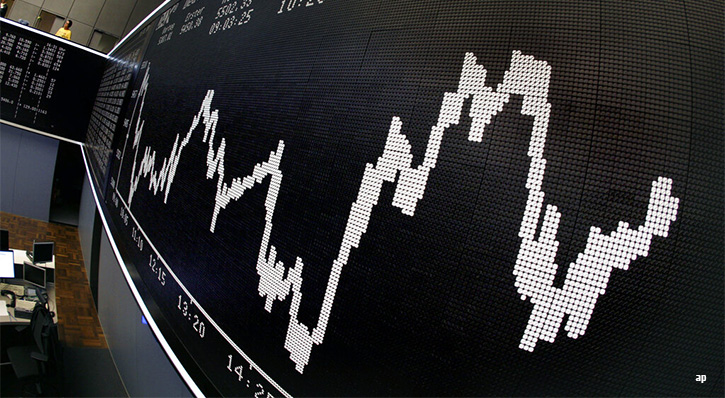Rolle im Portfolio
This Vanguard S&P 500-ETF is best suited as a core building block for a portfolio, providing broad exposure to many of the largest companies in the world’s biggest economy. With 500 large-cap constituents, the S&P 500 Index covers three-quarters of the U.S. equity market and is well diversified by sector and security. Increasingly, the underlying companies themselves are becoming geographically diversified, getting more and more of their revenue from outside the United States.
U.S. equities comprise a large portion of many global equity indices, making up almost 55% of the MSCI World Index. So combining this fund with a global product might result in an overweight to U.S. equities. It would therefore work better in conjunction with a Europe, Australia and Far East (EAFE) or World ex-U.S. exposure.
This fund pays dividends on a quarterly basis, so it may be suitable for investors seeking income.
Fundamentale Analyse
Over six years after the collapse of Lehman Brothers, the U.S. economy has taken the lead of countries on the path to economic recovery. With the main US equity benchmarks reaching their all-time highs in late 2014, the financial market nosedive in 2008 and the subsequent Troubled Asset Relief Program (TARP), which bailed out AIG, Bank of America and Citigroup and rescued the automotive industry giants, seem like a distant memory.
Economic growth has had a 3% average annualised pace over the last 30 years but is expected to remain lower in 2015. The US is in the midst of its longest— and slowest— economic expansionary period since World War II. But the expansion doesn’t show signs of stopping in the short-term, with unemployment staying comfortably under the Federal Open Market Committee’s 6.5% target, and inflation remaining below the Fed’s 2% target.
The housing market continued its upward climb with improved home sales throughout 2014, all the while home prices have continued to rise year-on-year. The S&P/Case Shiller Home Price Index 20-city composite rose 4.6% in the 12 months through the end of December 2014.
Improved economic conditions led the Federal Reserve to announce it will likely raise interest rates later in 2015. Janet Yellen, Chairman of the Federal Reserve, indicated interest rates would only be increased in small increments, not necessarily on any type of fixed schedule, and all changes would be data-driven, not automatic.
Meanwhile, the U.S. is in the early stages of a potentially game-changing energy revolution. The U.S. has become the world’s biggest gas producer, and the economy stands to benefit from a competitive advantage that follows the development of hydraulic fracturing technology, also known as fracking.
Indexkonstruktion
The S&P 500 Index is a free float capitalisation-weighted portfolio of 500 large, United States domiciled stocks. To join the index, constituents must meet minimum liquidity requirements, have a public float greater than 50% of the value of their stock and have market capitalisations above $4 billion. A committee maintains the index and meets regularly to review its underlying components, making changes on an as-needed basis. If a constituent falls out of line with any of the index’s entrance criteria, the committee can use its discretion to keep it in the index if the change is deemed temporary. New entrants to the index are also meant to contribute to its overall sector balance, as measured using the Global Industry Classification Standards (GICS®). The most significant sector exposures are information technology (18-21%), financials (15-17%) and health care (13-15%). Portfolio concentration is limited, with the top ten stocks in the index making up just 17-19% of its total. Top constituents are Apple, Exxon Mobil and Microsoft, with a 2-4% weight each. The median market capitalisation of constituents is about $19 billion.
Fondskonstruktion
The fund uses full physical replication to try to capture the performance of the S&P 500 Index, owning – to the extent possible and efficient – shares in all of the underlying constituents in the same weights as those of the index. The fund uses futures for cash equitisation purposes, which helps to limit tracking error. In the 12 months through the end of March 2015, the fund had not participated in securities lending.
Gebühren
The fund’s total expense ratio (TER) is 0.07%, which is at the low end of the range for ETFs with exposure to the US large-cap equity market. Besides, the positive tracking difference (fund return – index return) since inception in May 2012 suggests that the TER is fully offset by revenues generated from tax enhancements. Other costs typically carried by the unitholder include bid-offer spread and brokerage fees when buy and sell orders are placed.
Alternativen
Many providers offer ETFs tracking the S&P 500 Index, including Amundi, ComStage, HSBC, db x-trackers, Lyxor, Source, iShares, SPDR and UBS. The Source fund and the UBS fund have the lowest fees, with a TER of 0.05%.
Beyond the S&P 500, there are a number of index alternatives for the U.S. equity market, including the MSCI USA index, the Dow Jones Industrial Average, which is price weighted and more concentrated, and the technology-heavy NASDAQ.
For alternatives to market capitalisation-weighted exposure to U.S. equities, there are also Ossiam ETF US Minimum Variance NR, db x-trackers S&P 500 Equal Weight and PowerShares Dynamic US Market Fund.
Die in diesem Artikel enthaltenen Informationen dienen ausschließlich zu Bildungs- und Informationszwecken. Sie sind weder als Aufforderung noch als Anreiz zum Kauf oder Verkauf eines Wertpapiers oder Finanzinstruments zu verstehen. Die in diesem Artikel enthaltenen Informationen sollten nicht als alleinige Quelle für Anlageentscheidungen verwendet werden.
















